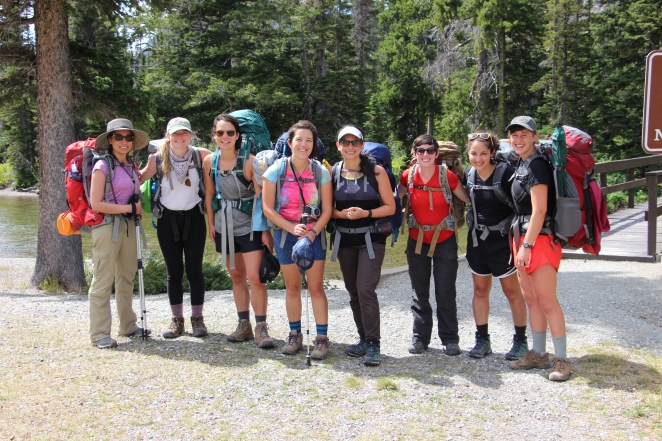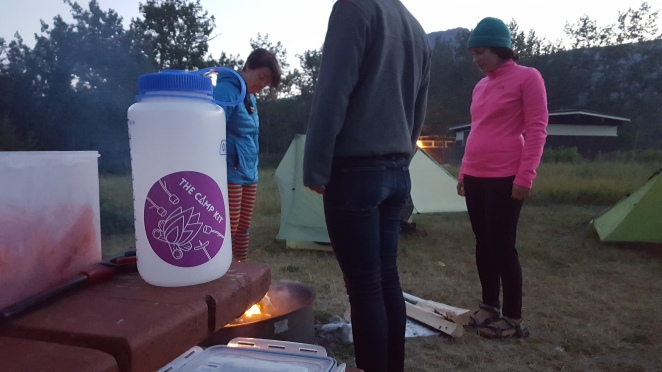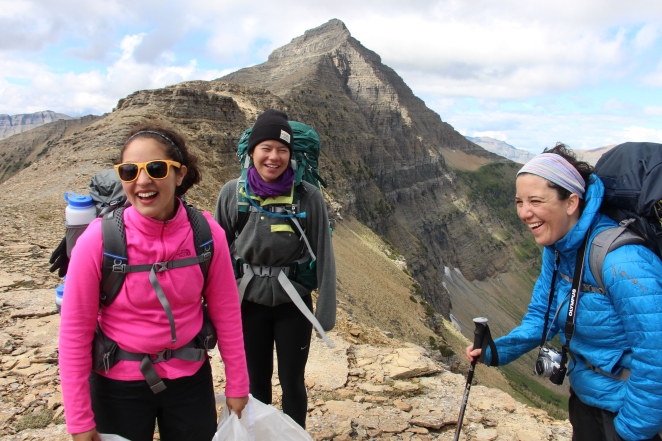Submitted By: Mika Weinstein, Board Member
On a brisk fall day, fellow Wild Woman, Sara, and I made the last minute decision to head out for a quick 23-hour trip to Annapolis Rocks in Maryland. In a stroke of luck, we made it to the overlook right in time for a sublime sunset.
We lounged in its glory and then set out to make camp in the dark. This was my first experience camping in a hammock. I’d been curious about them for a while, since it’s ultra lightweight (this one is just over 2 pounds) without being as expensive as a comparable backpacking tent. That said, Sara pitched a two-person tent just in case I needed to dive in and escape the cold or discomfort midway through the night. I was happy to have a backup plan if the whole thing turned into a debacle, but mainly I was excited about this new outlet for my hammock enthusiasm (my roommate has a permanent indoor hammock in our living room).
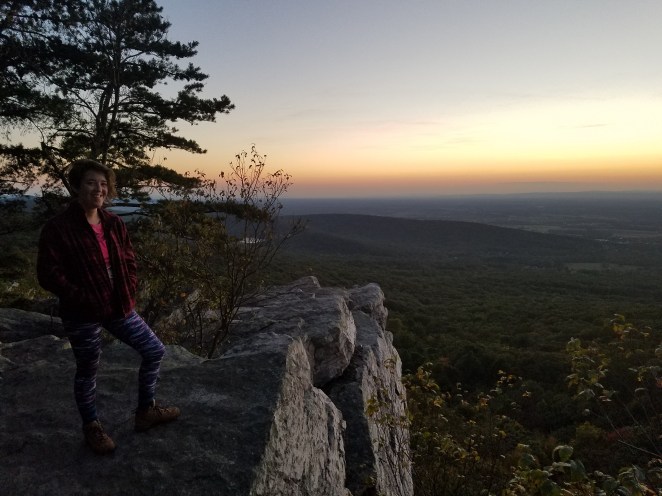
I tested Warbonnet’s bridge-style Ridgerunner sleeping hammock. As a first time hammock camper, I was pleasantly surprised by how easy Warbonnet makes it to use.
After fumbling around in the dark to find trees at the right distance apart, the rest was pretty simple. Having watched the video tutorial in advance, it took a minimal amount of jiggering to get the straps set up. The simplicity of the strap setup is really nice. I’ve seen a demo of the intricate knot required for stringing up other camping hammocks, and it takes some practice. The carabiner slung around the tree takes seconds and makes for easy adjustments. That’s key for keeping the hammock off the ground while you’re still learning the ideal placement height.
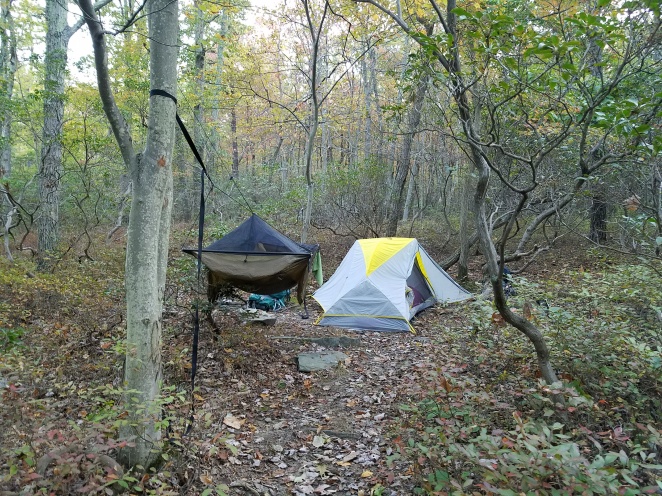
All told, I only have positive things to say about the Ridgerunner.
The mosquito net zips off for a nice open-air option (you can stuff it into a pocket near the feet), and even with it on there’s plenty of breathing room. Using the side zipper as an entrance makes for easy exit and entry without jostling your sleeping pad and bag too much (as opposed to other brands that have bottom entry).
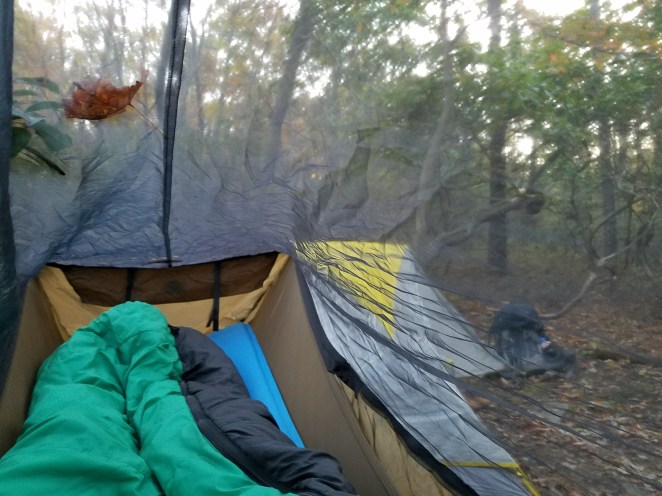
There are aluminum spreader bars that hook in on the two short edges, which helps keep the hammock relatively flat and broad without you having to sleep diagonally. There was plenty of space to throw in my sleeping pad, which proved to be adequate insulation for that night. The spreader bars also make the long edges of the fabric taut, so you can brace yourself by hanging onto them while you get in and out.
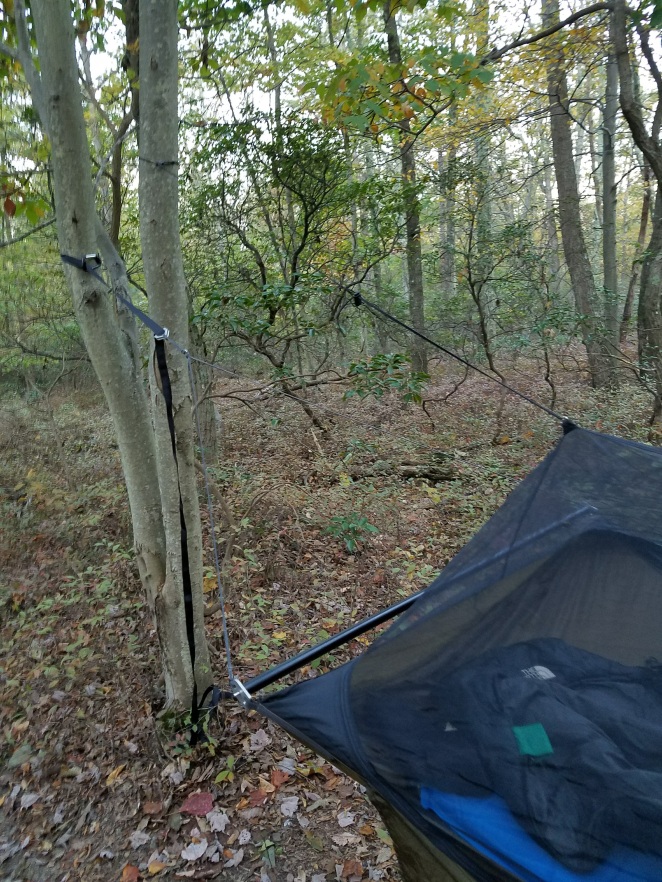
The pockets (called “saddlebags” by Warbonnet) are a great bonus feature. I kept my cell phone and flashlight in there without worrying they would slide around during the night.
The only caveat is that you have to purchase a tarp separately, which can drive up the cost of the whole system ($190 for the hammock, $95-$140 for tarps). Even then, they have a 60-day return-for-any-reason policy, so there’s no risk in trying it out.
Disclaimer: Warbonnet provided a hammock in exchange for a review. The opinions shared here are an honest take from the author.


